Kayak Model Item Number: E1097-0 from the National Museum of Natural History
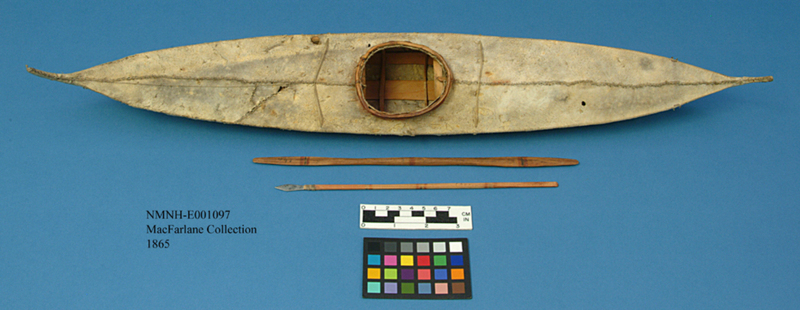


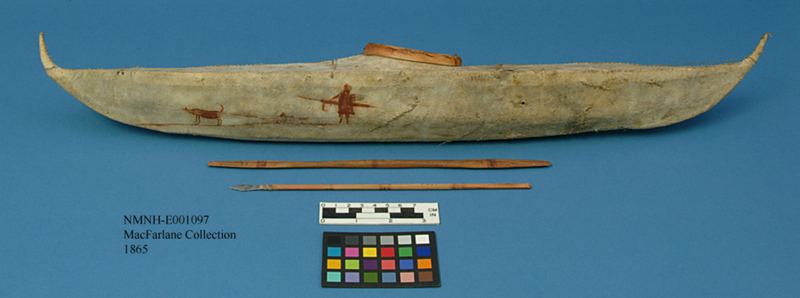


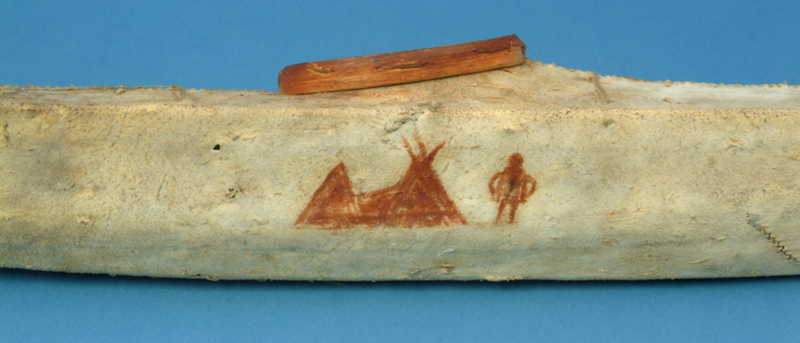
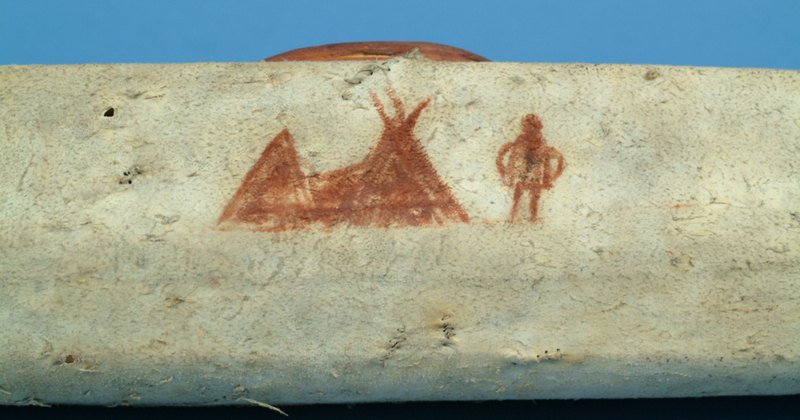
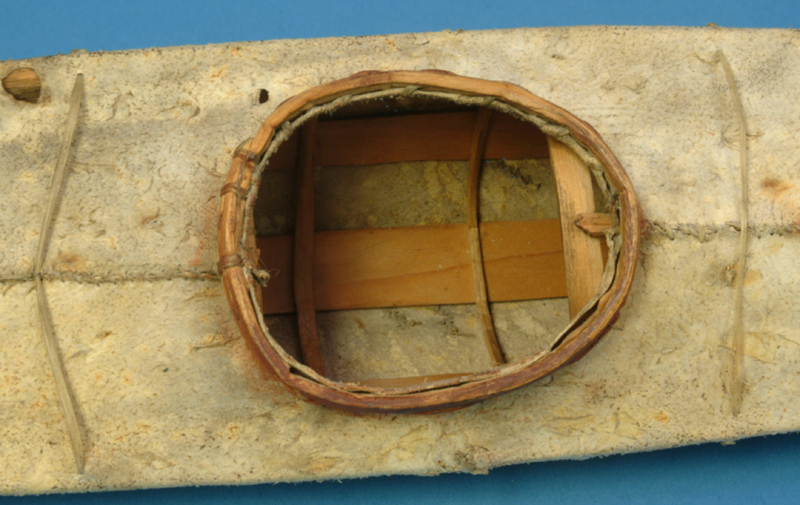
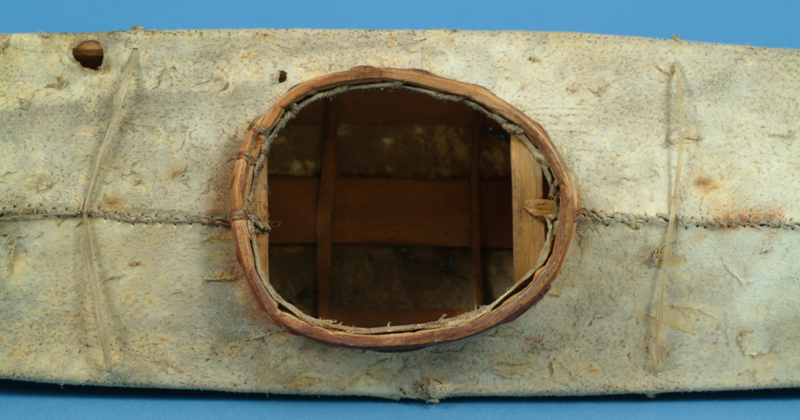

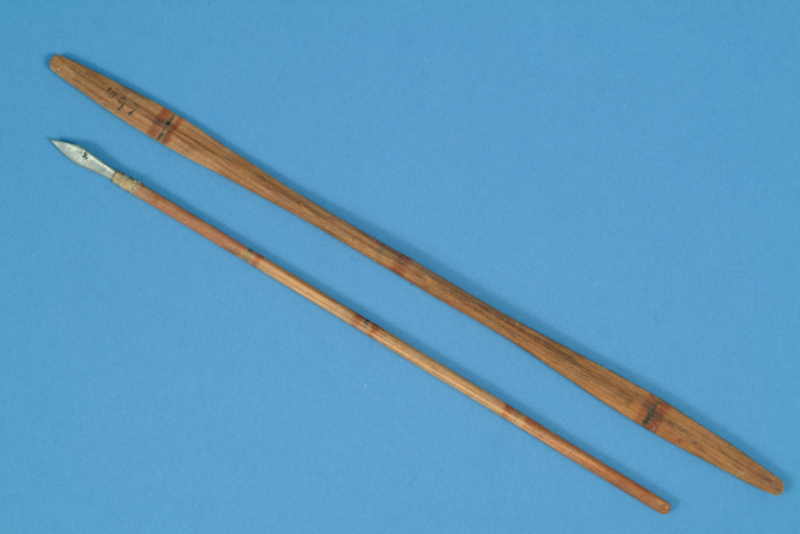

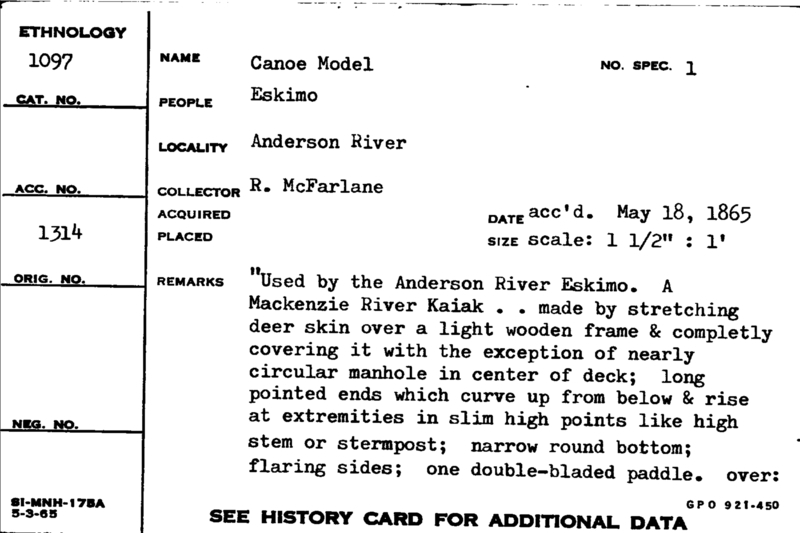

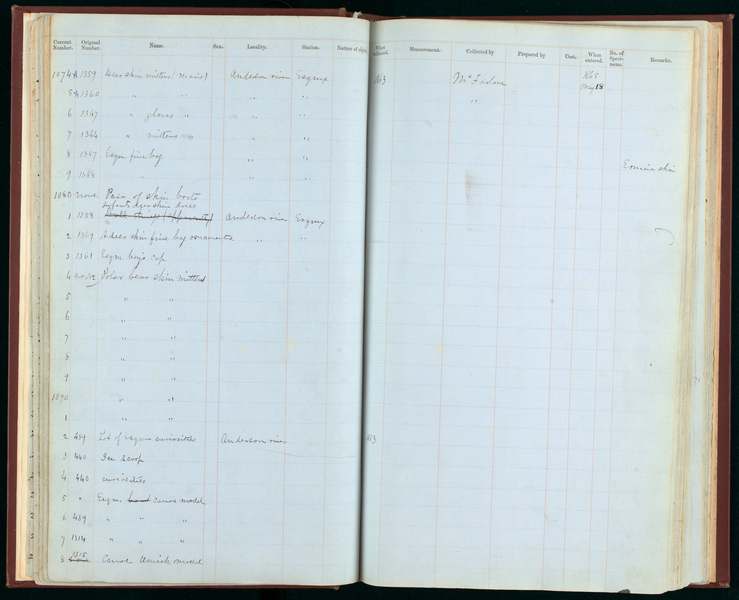

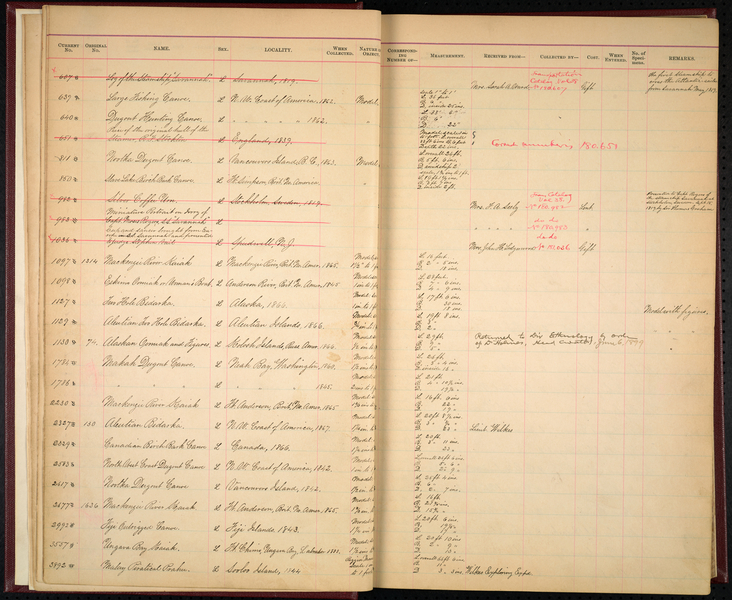
Notes
FROM CARD: "USED BY THE ANDERSON RIVER ESKIMO. A MACKENZIE RIVER KAIAK MADE BY STRETCHING DEER SKIN OVER A LIGHT WOODEN FRAME & COMPLETELY COVERING IT WITH THE EXCEPTION OF NEARLY CIRCULAR MANHOLE IN CENTER OF DECK; LONG POINTED ENDS WHICH CURVE UP FROM BELOW & RISE AT EXTREMITIES IN SLIM HIGH POINTS LIKE HIGH STEM OR STERMPOST; NARROW ROUND BOTTOM; FLARING SIDES; ONE DOUBLE-BLADED PADDLE. OVER: THIS MODEL IS ORNAMENTED WITH RUDE [sic] DRAWINGS IN RED SHOWING THE SUMMER CAMP OF THE ESKIMO, AND AN ESKIMO HUNTER RETURNING FROM A HUNT WITH A DOG PULLING THE GAME." See Collins boat MS. p. 818.Source of the information below: Inuvialuit Pitqusiit Inuuniarutait: Inuvialuit Living History, The MacFarlane Collection website, by the Inuvialuit Cultural Resource Centre (ICRC), Inuvik, N.W.T., Canada (website credits here http://www.inuvialuitlivinghistory.ca/posts/12 ), entry on this artifact http://www.inuvialuitlivinghistory.ca/items/209 , retrieved 12-10-2019: Model of a kayak with prominent upturned ends that are distinctive of Inuvialuit kayaks. It has a frame made from wood components joined by lashings and mortise and tenon joints, and a cover made from several pieces of hide stretched over the frame and stitched together. Deck lashings made from sinew for holding hunting implements are attached fore and aft of the cockpit. On each side of the model is a drawing made using red ochre. One drawing illustrates a camp scene with a person standing next to a tent, and the drawing on the other side is a hunting scene with an individual holding a harpoon and a dog dragging a seal. The model includes a double-bladed paddle and a lance. Both are made of wood, and the lance has a metal tip. The paddle and the lance have been decorated with transverse lines made from red and black pigments. More information here: http://www.inuvialuitlivinghistory.ca/item_types/32: Inuvialuit used lightweight kayaks for hunting whales and seals, setting and hauling fishnets, and spearing swimming caribou. The frames were made from driftwood, and skins of seals or beluga whales were used for covers. Inuvialuit kayaks had distinctive upturned stems that were useful for lifting them from the water. Full-sized kayaks would have been difficult to send to the Smithsonian Institution, and MacFarlane instead collected accurately made mod
Item History
- Made in Northwest Territories, Canada
- Collected in Northwest Territories, Canada
- Received from Roderick R. MacFarlane on May 18, 1865
What
- Name
- Kayak Model
- Identification Number
- E1097-0
- Type of Item
- kayak model, paddle model and lance model
Who
- Culture
- Eskimo, Inuit and Inuvialuk
- Received from
- Roderick R. MacFarlane
Where
- Holding Institution
- National Museum of Natural History
- Made in
- Northwest Territories, Canada
- Collected in
- Northwest Territories, Canada
When
- Acquisition Date
- on May 18, 1865
Other
- Accession Number
- 65A00065